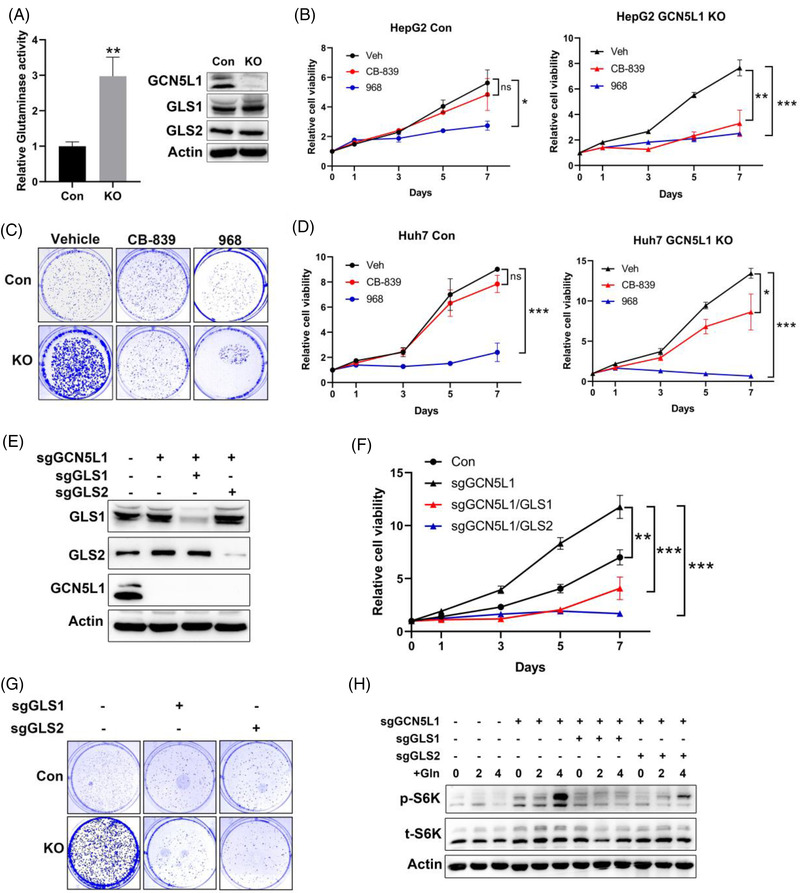FIGURE 4.

General control of amino acid synthesis 5 like 1 (GCN5L1) loss‐induced cell proliferation is dependent on the activity of glutaminase (GLS1 and GLS2) and mammalian target of rapamycin complex 1 (mTORC1). (A) Glutaminase activity was evaluated in HepG2 cells in the presence or absence of GCN5L1. Immunoblotting showed GLS1 and GLS2 expression levels in HepG2 cells. Data are presented as the means ± standard deviation (SD) from three independent experiments, **P < .01. (B and C) The GLS1 inhibitor CB‐839 (1 μM) and GLS2 inhibitor 968 (10 μM) were incubated with HepG2 cells with GCN5L1 deletion or control cells, and MTT assays (B) and 2‐D colony formation assays (C) were used to evaluate cell proliferation. (D) Huh7 proliferation was tested by MTT assay with/without CB‐839 (1 μM) and 968 (10 μM) in GCN5L1‐deleted cells and control cells. (E‐G) GLS1 or GLS2 was deleted by CRISPR in HepG2 cells with GCN5L1 deletion. Protein expression was confirmed by western blot (E). MTT assays (F) and 2‐D colony assays (G) were performed to evaluate cell proliferation. The cells were incubated in EBSS for 5 h, followed by incubation with 4 mM glutamine for the indicated times. p‐S6K levels were measured by immunoblotting (H). Data are presented as the means ± SD from three independent experiments
